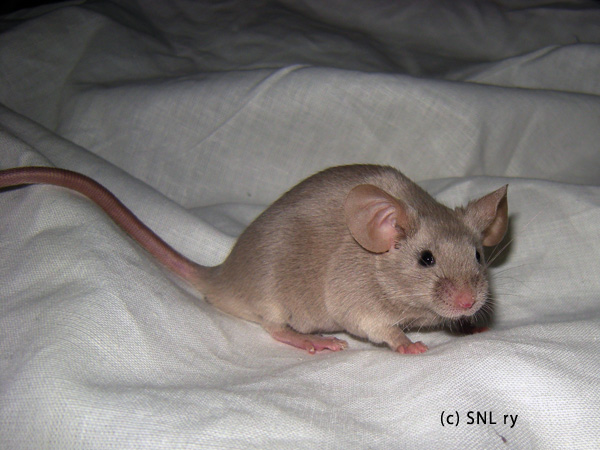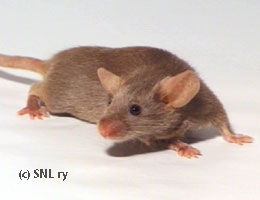Varieties
I - Self
Lilac (li)
a/a bc/* d/d C/* P/* or
a/a b/b d/d C/* P/*
"En even light grey with a hint of brown. Darker hair root acceptable. The mouse should give a clear overall appearance of a self mouse. Eye black."
Breeding information below the pictures.
Note: This article is old and waiting to be rewritten.
Quick Look
Lilac is a bit controversial colour. Opinions seem to differ on its actual shade. Lilac is the diluted chocolate and it does take some effort to combine these two recessive factors. The first mating is chocolate to blue, which will produce black (carrying both chocolate and blue). These are then mated together, mathematically 1/16 of the litter should be lilacs. In real life, it can be any number of blacks, blues, chocolates and lilacs. Further breeding must be considered according to the results from the second generation. However, mating lilac with dilute carrying chocolate should give 3/4 of the litter lilacs.
Lilacs born in first generations when starting from scratch tend to be too dark and brown. This is because both chocolates and blues are bred to have depth in colour and are thus selectively bred to have modifiers to give just that. So, in order to get the desired lilacs with correct lightness and "grey with a hint of brown" (just a hint!), you'll need to breed out these colour deepening modifiers.
Black eyed silver, which is found in National Mouse Club's standards, is said to be actually lilac mouse - selectively bred to be as light as silver.



